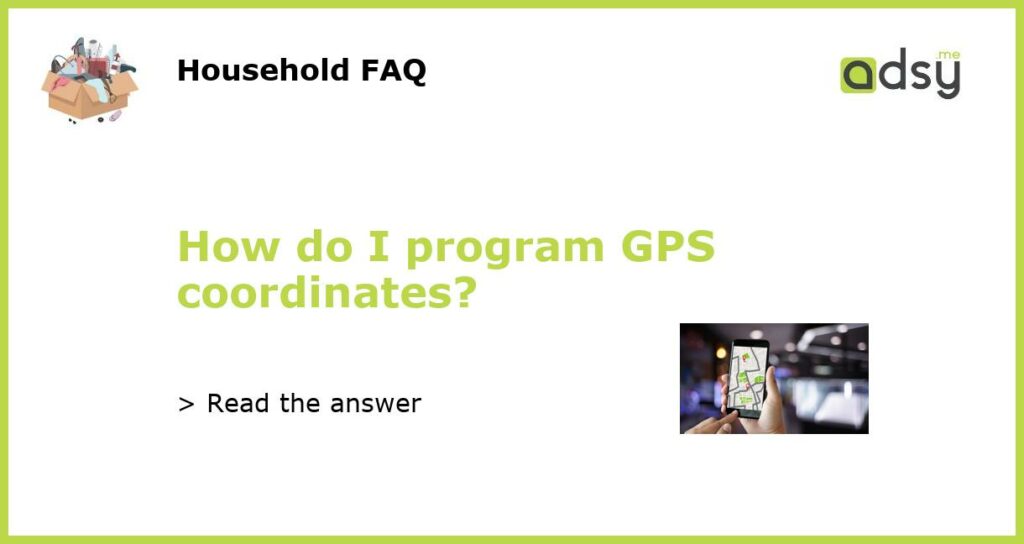Understanding GPS Coordinates
Before programming GPS coordinates, it’s essential to understand what they are. GPS (Global Positioning System) coordinates provide a location’s latitude, longitude, altitude, and sometimes, additional data such as the precision of the location. GPS coordinates usually include a degree symbol followed by a number, a single space, then a degree symbol followed by a number with a directional letter (N, S, E, W) at the end.
Programming GPS Coordinates in Different Languages
Depending on the programming language you’re using, there are various ways to program GPS coordinates. In JavaScript, for example, you can use the Geolocation API. The API provides a getCurrentPosition() method that allows you to retrieve the user’s current position and returns an object with coordinates. In Python, you can use the Geopy library, which provides an interface to various geocoding services, including GPS coordinates.
Converting GPS Coordinates
GPS coordinates can be stored and displayed in several formats, such as decimal and degrees-minutes-seconds (DMS). Before programming GPS coordinates, you may need to convert them to the appropriate format for your application. Many online tools, such as GPS Visualizer and GPS Coordinates Converter, allow you to convert GPS coordinates from one format to another.
Testing GPS Coordinates
To ensure that GPS coordinates are accurate and correctly programmed, testing is essential. You can use various tools, such as GPS simulation software, to simulate location updates and test GPS functionality. Additionally, you can use smartphone apps that provide GPS coordinates to test your application.
Best Practices for Programming GPS Coordinates
When programming GPS coordinates, it’s essential to follow best practices to ensure that your application is accurate and reliable. Some best practices include checking for GPS signal strength, ensuring that GPS is enabled on the device, calibrating the device’s sensors, and providing clear and accurate GPS instructions to the user. Additionally, you should regularly test and update your application to ensure that it continues to function correctly.






